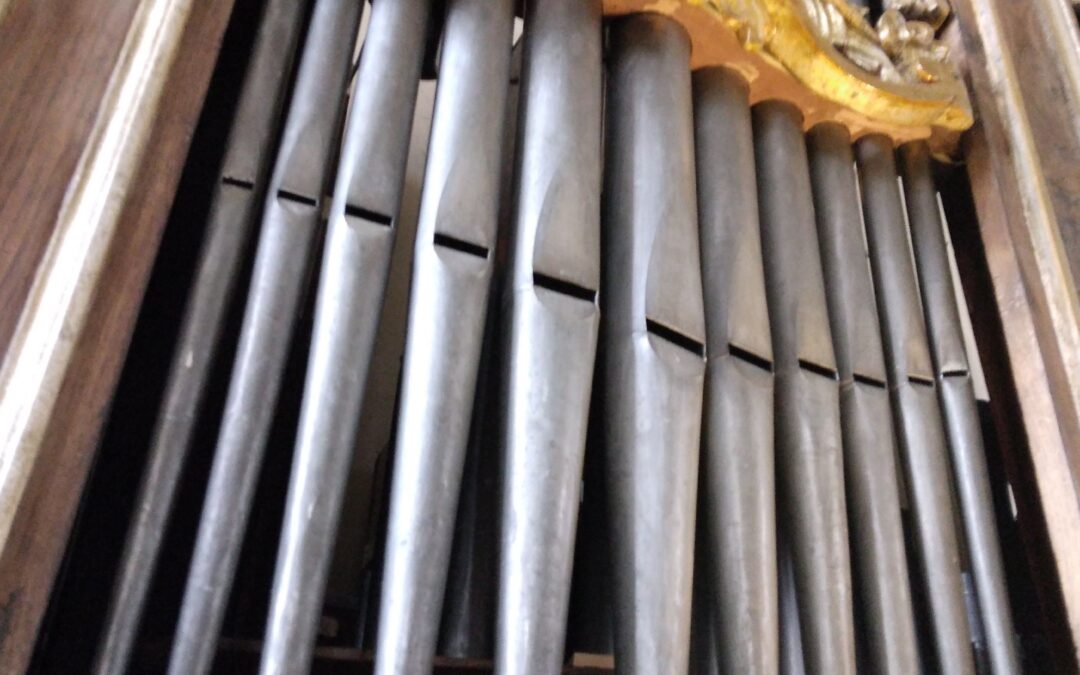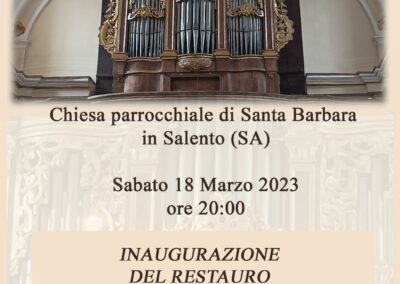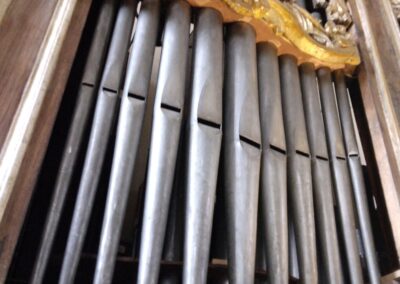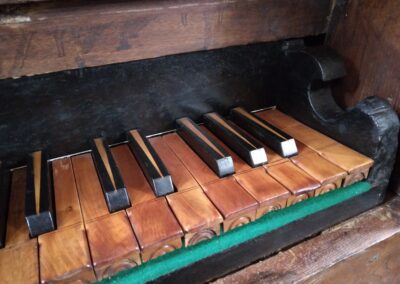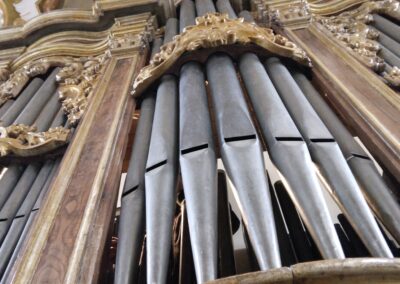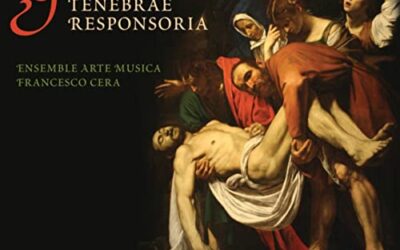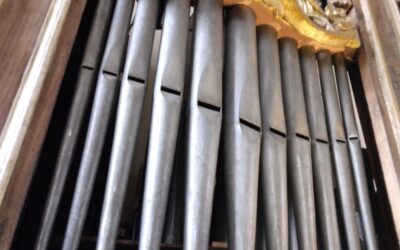The valuable organ preserved in the parish church of Santa Barbara in Salento (in the southern part of Campania region called Cilento) was built in 1798, as reported by an inscription found on the pipe rack (“Sala di Gioi 1798”) and most likely attributed to the organ builder Silverio Carelli. A further inscription “A.D. 1836 Giuseppe Passaro” certifies a restoration. Silverio Carelli was a distinguished organ maker based in Vallo della Lucania (a major village in Cilento) who built organs in the second half of the eighteenth century. He learned the art from his father Leonardo Carelli, who in turn was in the workshop of Zaccaria Pinto, author of the organ of Sant’Eustachio in Gioi Cilento in 1733. The prolific activity of Silverio Carelli as organ builder extended throughout Cilento to the town of Eboli, the Irpinia region, Ischia and Naples, where two monumental instruments in San Domenico and San Giacomo degli Spagnoli were built. The organ of the Cathedral of San Pantaleone in Vallo della Lucania, from 1783, is the most impressive among those he built in Cilento.
Silverio Carelli’s organs are distinguished by a very accurate workmanship of the pipes and of all the mechanical parts. The cases of the Carelli organs are characterized by a lively and elegant moulding, which also gives a sense of movement to the pipes on the façade, especially with the “S” shape of the side fields. The keyboards are always decorated with inlays, while the rather strong and full sonority indulges in a particular tone sweetness, compared to other Neapolitan makers, especially in the Principale register which has fairly high mouths.
The Salento organ underwent a restoration in 2000 by Roberto Esposito di Fuscaldo (CZ), work which unfortunately left the instrument with serious efficiency and tuning problems and some modifications, particularly in the Contrabbasso stop. In 2019 the organ was entrusted, with the approval of the Soprintendenza, to the organ builder Giuseppe Fontana of Altavilla Silentina (SA) for a recovery of perfect efficiency which re-established an optimal hold of the windchest, of the unequal tuning (identical to the original one found on the Carelli organ in Celle di Bulgheria), the correct reordering of the pipes and the restoration of the original sequence of the notes of the Contrabbassi. Fortunately, the pipes had preserved the original voicing characteristics found in other Carelli instruments. An adequate wind pressure has be established (64 mm. The original weights being missing) and the manual operation of the original Carelli bellows.
In the 1950s the elegantly designed case underwent the removal of the original tempera color, but it retains the authentic fine gilding of the carvings (meccatura).
One 45-key keyboard with a C-c’’’ range with a short first octave; diatonic keys covered in boxwood, inlaid chromatic keys.
Pulldown pedalboard with range C-c, short octave.
Principale 8′ Voce umana (from c’)
Ottava Principale secondo 8’ (from c#’)
Quintadecima Flauto in duodecima 2 2/3′
XIX
XXII
XXVI
XXIX
Tiratutti (pulls from Ottava to XXIX)
Contrabbassi are operated by the first 9 keys of the keyboard; sounding 8′ from C to E and 16′ from F to c. It is possible to exclude them by a knob added in the 2000 restoration.
Two original wedge bellows. Wind pressure: 64mm. Electric blower
Pitch: a’ 415 Hz at 20°.
Unequal temperament with four pure major thirds on f, c, d and g
Read the News
Read the News
Carlo Gesualdo Responsoria
Interview appeared on Il Resto del Carlino (October 6, 2023) introducing the concert for Bologna...
Carlo Gesualdo Responsoria
Articolo apparso sul Resto del Carlino il 6 ottobre 2023 in occasione del concerto tenuto per il...
Il restauro dell’organo di Silverio Carelli 1798 a Salento
Il pregevole organo conservato nella chiesa parrocchiale di Santa Barbara a...
A Music Academy for the Dukes of Este
A Music Academy for the Dukes of Este Concert held on 25...
Musica alla corte dei Duchi d’Este
Un’Accademia Musicale per i Duchi d’Este Note al...
Rediscovering Francesco Rasi’s Compositions
The solo singing and its great potential ramifications, that developed for centuries to come, have...
